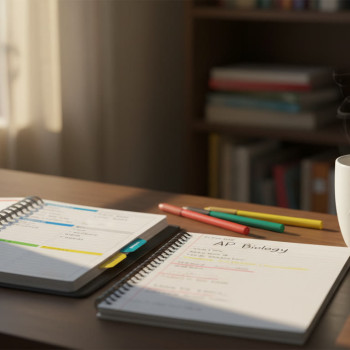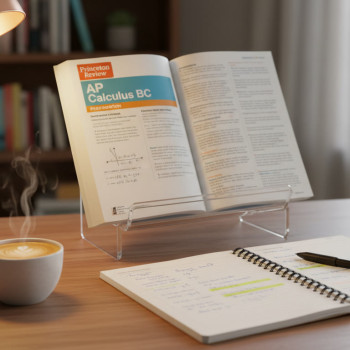Why A/B Weeks Work for AP Students
If your school runs an A/B week schedule — or even alternating class days — you know the pattern: a set of courses meet on “A” days and a different set on “B” days. On the surface it’s just logistics. But with a little strategy, that alternation becomes a powerful tool to balance the demands of Advanced Placement classes, extracurriculars, and the all-important thing students often neglect: recovery.
This guide turns that alternating rhythm into a study engine. You’ll get practical templates for organizing content review, practice exams, and project work across the two-week cycle. You’ll also see sample weekly plans, a simple table you can customize, and actionable tips to squeeze out more progress with less burnout. Where appropriate, I’ll mention how Sparkl’s personalized tutoring—1-on-1 guidance, tailored study plans, expert tutors, and AI-driven insights—can accelerate your gains without adding more hours to your day.
Think Bigger Than “Day-by-Day”: The Logic of A/B Week Planning
Most students treat A/B as a scheduling annoyance: “Oh right, AP Calculus is only every other day.” Instead, flip the view: your alternating schedule gives you natural blocks of concentrated time for each subject. That means you can design study cycles that alternate between deep focus and reinforcement, which is exactly how long-term retention is built.
Three principles to keep in mind:
- Depth over constant shallow contact. If a class meets less frequently, use the gap to engage in deeper, higher-quality study: practice problems, concept mapping, or a timed free-response question.
- Spaced retrieval beats cramming. Alternating weeks create natural spacing—use it intentionally for retrieval practice across AP topics.
- Rhythm protects well-being. Plan for study and rest as equal partners. A predictable rhythm reduces decision fatigue and improves consistency.
How to Set Up an A/B Week Study Framework
Step 1 — Map your contact points
Start by listing all AP classes and marking whether they meet on “A” or “B” week (or both). Add non-AP obligations that follow the same pattern: labs, ensemble rehearsals, internships, or sports. This map will show real available blocks for focused work.
Step 2 — Allocate study themes by week
Instead of scheduling by subject only, assign each week a theme for each AP course. For example:
- Week A (for AP Biology): Core concepts and guided reading + problem set
- Week A (for AP English Lang): Source synthesis + timed rhetorical analysis
- Week B (for AP Biology): Practice FRQs + review flashcards
- Week B (for AP English Lang): Peer review + timed synthesis essay
That thematic approach turns every meeting or study block into a clear objective, reducing wasted time and anxiety about what to do next.
Step 3 — Build microcycles within the two-week span
Within each A or B week, break study time into three recurring microcycles:
- Learn: New content or challenging material (45–75 minutes). Ideal for class nights or the evening right after class when your brain is primed.
- Practice: Active tasks—problem sets, FRQs, practice sections (60 minutes). Use one block per subject each week.
- Review: Short retrieval sessions (15–30 minutes) spaced 2–4 days later.
Sample Two-Week A/B Schedule (Customizable)
Below is a flexible template you can adapt. It assumes four APs split across A/B. Swap subjects and time blocks to match your real life.
| Week | Focus | Learn Block | Practice Block | Review / Light Work |
|---|---|---|---|---|
| A Week | AP Chemistry, AP US History | New topic lessons & class notes | Problem sets & document analysis | 15–20 min flashcard or concept checks 3x |
| B Week | AP Calculus, AP English Lit | Derivations, poems & close reads | Timed FRQs & applied problems | Quick summaries and error logs |
Customize by swapping subjects where necessary. If a course meets both A and B days, treat it as a weekly course and alternate learn/practice on different days within the week.
Weekly Routines That Fit the Rhythm
Evening Routine: 30–75 minutes
Evenings are your opportunity to convert passive exposure into active mastery. After class or between activities, do one focused task:
- 30 minutes: Review notes and highlight gaps
- 45–60 minutes: Solve 4–8 practice problems with answers closed
- 10–15 minutes: Add 3–5 items to a spaced-repetition deck
Weekend Block: 2–4 hours
Use weekends for deeper practice that’s harder to fit into weekday windows. Rotate between these priorities:
- Full practice exam sections (timed)
- In-depth essay writing or lab write-ups
- One-on-one tutoring session or targeted review
How to Use A/B Rhythm for Exam Prep (Midterms and AP Exam Season)
As exam season approaches, shift the A/B structure toward cumulative review. Instead of introducing new units, alternate between:
- Week A: Full-section practice and mistake analysis
- Week B: Mixed-topic quick drills and concept mapping
This alternation preserves both long practice sessions and frequent retrieval, which together build stamina and reduce test-day surprises.
Concrete Example — 6 Weeks Out
Say you’re six weeks before AP exams. Your two-week cycle might look like:
- Week 1A: Timed multiple choice section for AP Bio + review
- Week 1B: Timed free response set from a different year + grading rubric study
- Week 2A: Concept mapping of weak areas + targeted practice
- Week 2B: Full practice test under exam conditions
Repeat, tightening time limits and refining your error log each cycle.
Tools and Tactics to Make A/B Weeks Practical
1. The Two-Week Planner
Create a simple two-week planner (digital or paper) that lists the important objective for each class on A and B weeks. Keep it visible—on your phone lock screen or study wall. The habit of looking at it before you start studying reduces procrastination.
2. Error Logs and “Fix Lists”
After every practice session, write one sentence describing the core mistake and list a tiny action to fix it (e.g., “misapplied equilibrium constant — review Le Chatelier examples and redo problems 12–15”). You’ll use A weeks to learn and B weeks to test these fixes.
3. Timeboxing and the Two-Hour Cap
Long marathons are tempting. Instead, timebox: 50–60 minute deep sessions with 10–15 minute breaks, and cap daily AP study to a realistic limit (usually ~2–3 hours on heavy days). The alternating schedule naturally reduces overcommitment when you respect those caps.
Sample A/B Two-Week Template (Student-Friendly)
| Day | Morning | Afternoon | Evening | Goal |
|---|---|---|---|---|
| Monday (A) | Class | Clubs | AP Chem Learn (45m) | Understand new mechanism |
| Tuesday (A) | Study hall | Lab | APUSH Practice DBQ (60m) | Practice sourcing |
| Wednesday (B) | Class | Sports | AP Calc Practice (60m) | Timed derivatives set |
| Thursday (B) | Peer review | Free period | AP Lit Essay (45m) | Thesis and evidence structure |
| Friday | Light review | Friends / Rest | Weekly review (30m) | Error log and adjustments |
| Weekend | Practice test slice | Excercise / rest | Plan A/B week ahead | Consolidate learning |
How to Prioritize When Everything Feels Important
AP season is a classic case of too-many-high-priority-things. Here’s a simple triage method:
- Tier 1 (Must Do): Tasks that directly increase your score (timed practice, past FRQs, rubric practice).
- Tier 2 (Helpful): Review sessions, targeted lessons on weak topics, one-on-one tutoring.
- Tier 3 (Optional): Passive reading, extra broadening activities that don’t directly affect scores.
Use A weeks to tackle Tier 1 items for your A-week subjects and B weeks for Tier 1 items for your B-week subjects. Save Tier 2 for weekend blocks and short evening sessions. If time is tight, defer Tier 3 entirely until after exams.
Real-World Examples and Quick Wins
Here are three short scenarios and how an A/B approach solves them.
Scenario 1 — The Overloaded Junior
Problem: Four APs, varsity sport, and dance rehearsals. Solution: Use A/B to concentrate AP practice sessions on days when the class meets; schedule a single, focused 90-minute weekend block for mixed-topic practice. Use short (15–20 minute) retrievals on sprint days. If you have access to Sparkl’s personalized tutoring, schedule twice-monthly 1-on-1 sessions to target the highest-impact weaknesses so your limited time yields rapid gains.
Scenario 2 — The Student with Gaps in One Subject
Problem: Solid in three APs but struggling in AP Chemistry. Solution: Reserve one A-week evening exclusively for high-intensity chemistry practice; use B weeks to test improvements with past FRQs. Book a focused tutoring slot (even a single session) to diagnose systematic gaps and get a tailored practice sequence—this is where individualized plans pay off.
Scenario 3 — Exam Stamina Worries
Problem: Runs out of steam during full-length tests. Solution: Use alternating weeks to build endurance: one week prioritize full-length practice under timed conditions, the next week prioritize mixed-topic quick drills and recovery. Over several cycles, increase the length of practice sessions bit by bit to build stamina without burning out.

Measuring Progress: Data You Should Track
Track a few key metrics every two weeks so you can objectively evaluate what’s working. Keep it simple—no more than five metrics:
- Practice score averages (MCQ and FRQ separately)
- Number of timed sections completed
- Top 3 recurring errors (from your error log)
- Average time per question or per essay
- Wellness check (energy and sleep rating out of 10)
Log these in a short spreadsheet or notebook. Every two-week A/B cycle, review and adjust. If a metric isn’t improving after two cycles, change tactics—either the study method or the distribution of time.
When to Use a Tutor — and How to Make Tutoring Fit the Rhythm
Personalized tutoring is especially effective when used as a strategic multiplier rather than a general crutch. Use tutoring to:
- Diagnose blind spots quickly so you avoid wasting weeks on low-impact tasks.
- Get tailored practice plans aligned to your A/B schedule.
- Practice under timed conditions with expert feedback.
Sparkl’s personalized tutoring can be woven into your A/B rhythm: schedule sessions on the week your weak subject is on (so you can immediately apply tutor feedback), and use the alternate week for independent practice of the tutor’s recommendations. This keeps tutoring focused and time-efficient.
Common Pitfalls and How to Avoid Them
Pitfall: Treating A/B Weeks as an Excuse to Delay
Some students say “I’ll study that on the next A week,” and that promise keeps getting pushed. Fix: Assign micro-actions (15–20 minute tasks) that you can do the very next day to maintain momentum.
Pitfall: Overloading the Weekend
Weekends are for consolidation, not punishment. Keep one day light—active recovery improves memory consolidation and prevents burnout.
Pitfall: Ignoring Transfer Work
Many AP exams reward transfer skills (e.g., applying physics reasoning in everyday contexts). Every other week, include a cross-application prompt: how would this idea apply to a real-world problem? This builds adaptive expertise the tests reward.
Quick Checklist: Your First Two A/B Weeks
- Create your A/B subject map and display it where you study.
- Assign a theme to each subject for A and B weeks (Learn vs Practice).
- Set two weekly microblocks for each AP: one deep session and one practice session.
- Start an error log and write one fix after each practice.
- Plan one weekend block for cumulative practice and a short wellness day.
- Optional: Book an initial Sparkl tutoring session to get a tailored plan.
Final Thoughts: Make the Rhythm Yours
A/B weeks are more than a timetable quirk — they’re an opportunity. By designing deliberate learn/practice/review cycles around that alternation, you convert unpredictability into predictable progress. Remember: consistent, well-structured practice beats last-minute marathons every time.
As you customize your plan, keep two truths in mind: 1) Focus on high-impact practice that mimics AP expectations (timed MCQs and FRQs), and 2) prioritize recovery. If you need help turning your A/B map into a week-by-week plan, personalized tutoring—like Sparkl’s tailored tutoring and AI-driven insights—can craft a targeted path that fits your life and speeds up improvement.

Good luck—trust the rhythm, track the data, and tweak every two weeks. With thoughtful A/B planning, your AP preparation becomes more efficient, more sustainable, and ultimately more effective.



















No Comments
Leave a comment Cancel